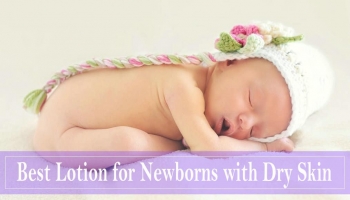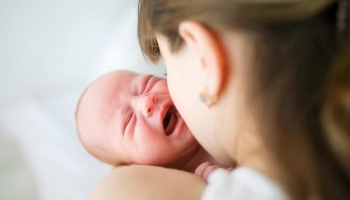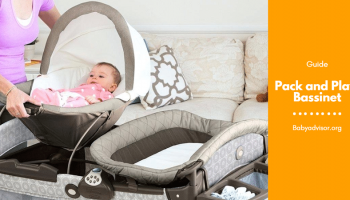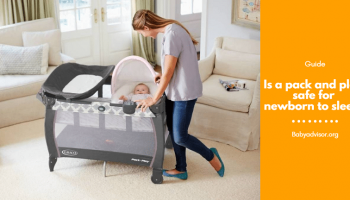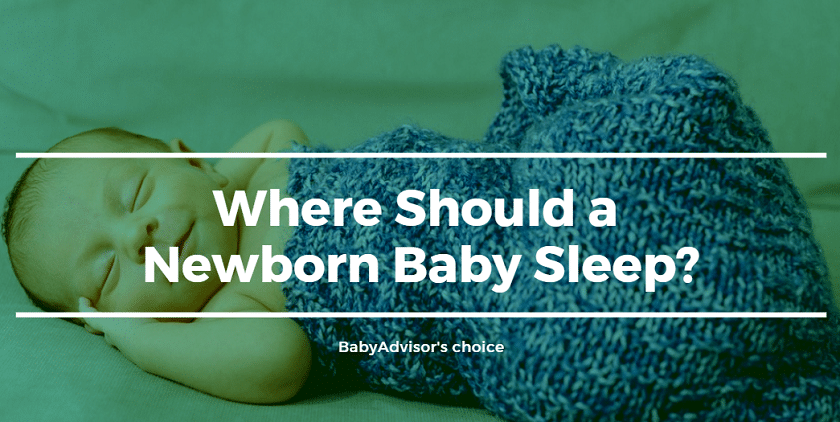
For most parents, returning from the hospital with their newborn baby is a time for celebration. After such a long wait, finally, the family is home together.
There is one immediate question that always arises, though…Where is the best place for the baby to sleep?
One of the most common answers is that it’s best to consider the sleeping habits of everyone, not just the baby. This is not selfish but common sense. While it’s obviously critical that the baby sleeps well, it’s also highly important that the parents manage a sound sleep. It’s a case of deciding what works best for each particular situation.
For some infants, they will want to be close to their parents from the very beginning. Others will initially find it manageable to sleep separately but then require moving when they start to experience nighttime separation anxiety. It’s key to see how the individual baby reacts and to respond accordingly.
There are two elements here: ensuring that everyone sleeps well and also helping the baby to develop a good attitude towards sleeping so that they look forward to the state of sleep and are not worried about remaining asleep.
The general recommendation is that your baby stays in the same room as the parents but not in the same bed. Both the US Consumer Product Safety Commission and The American Academy of Pediatrics strongly advise that co-sleeping is great – this is where you sleep in the same room – but that co-bedding is not wise. If the baby is in the same bed as the parents, there is a chance of suffocation taking place.
There are many associated risks with newborns sleeping. The most well-documented of these is Sudden Infant Death Syndrome. The danger of SIDS is reduced considerably when the baby is close to hand and co-sleeping makes this possible.
As well as the safety issues, babies tend to cry less if they sleep in the parents’ bedroom. Their needs can be swiftly met. This in turn leads to less stress for the adults. They can also feel closer to their babies and learn to read what they want more accurately.
So, having established that the baby should be in the room within easy reach, where should they sleep?
Bassinet
These come in many shapes and sizes. They are great for permitting maximum air ventilation. Their design also makes it simple to check on the baby as they are in plain sight.
Always check that the sleeping surface is firm enough. If there are wheels, make certain that they are lockable.
Don’t rely on old bassinets as they often do not conform to modern safety standards.
While they are designed to be ultra-portable, never move the bassinet with the baby inside.
One final thing to note is that the baby will routinely outgrow the bassinet long before the maximum suggested weight limit is reached. As they grow they will hit against the sides and you should move them to something larger.
You may love to read more about How to Pick The Best Portable Baby Bassinet?
Pack and play playard
One of the very safest options is a play yard. They are rated according to recent Consumer Product Safety standards.
The mesh sides of play yards are fully breathable and the mattress sufficiently firm. Both of these factors lessen the chance of SIDS.
If you want to attach toys then fasten them firmly to avoid any chance of suffocation.
Also resist the temptation to swap out the mattress provided for a softer or thicker one. Babies sleep well on firm surfaces and a level sleeping environment is paramount.
Related: A Complete Guide to Picking the Best Pack and Play.
Cradles
The classic option of a cradle can be OK but exercise caution…
Babies should sleep on their backs. With the cradle, they are more prone to rolling onto their side (or even their stomach) due to the way in which cradles rock.
More contemporary models have a locking mechanism which stops the rocking feature when the baby is asleep. A baby sleeps perfectly well when stationary so do not get them accustomed to a rocking feature. It may seem soothing but it’s unnecessary.
Current cradles also have mattresses of the correct type.
Cribs
One of the most efficient and cost-effective pieces of sleeping equipment is a crib.
They are very safe and will last until your baby becomes a toddler.
If your bedroom is large enough then the tried and tested crib is a smart choice. If you are limited for space, there are mini cribs on the market too.
Related: Find a Portable Cribs for travelling.
Bedside co-sleeper
A great alternative to bed sharing while still keeping baby and parents together is the bedside co-sleeper.
These do have a low weight limit and short span of use so think carefully before choosing one of these.
Brocking sleepers
They have gained in popularity but, for the reasons outlined with cradles, rocking sleepers encourage bad habits and should be avoided.
They have their place during waking hours but as a sleeping device, they are not recommended.
So…
With a wide range of different equipment available, focus on the one that best suits your space requirements, budget and taste.
Steer clear of vintage Moses baskets, thick or soft mattresses, equipment which is in any way damaged or infant sleep positioners. All of these pose risks.
Keep the baby in the same sleeping space, take sensible precautions and everyone can benefit from the best sleep possible.



